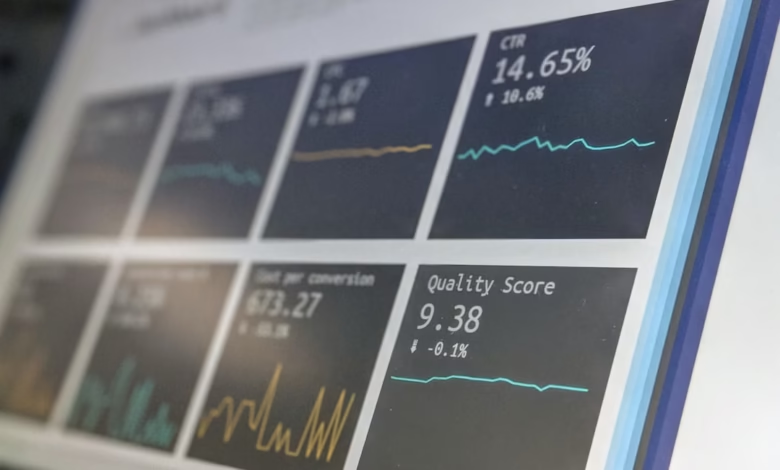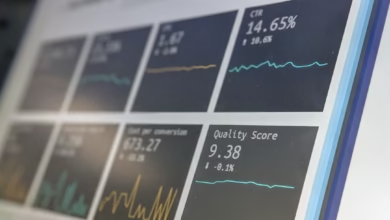Mastering Fundamental Analysis: Essential Metrics for Informed Trading Decisions in Stock, Forex, and Options Trading

In the fast-paced world of trading, whether it’s stock trading, forex trading, or commodities trading, understanding the financial health of assets is crucial for making informed decisions. Fundamental analysis serves as a cornerstone for traders who seek to evaluate market conditions and asset values beyond mere price movements. This analytical approach focuses on key metrics such as earnings reports, economic indicators, and market trends, providing a comprehensive view of an asset's potential.
As traders navigate various strategies—ranging from day trading and swing trading to options trading and futures trading—fundamental analysis becomes an essential tool in their arsenal. It aids not only in identifying investment opportunities but also in enhancing risk management and trading psychology, which are vital for successful trading outcomes. In this article, we will delve into the fundamentals of financial analysis, explore its application across different trading strategies, and examine its significance in managing risks and shaping trading behavior. Join us as we unpack the intricacies of fundamental analysis and its impact on your trading journey across various online trading platforms.
- 1. Understanding Fundamental Analysis: Key Metrics for Evaluating Financial Health in Stock and Forex Trading
- 2. How to Apply Fundamental Analysis in Various Trading Strategies: From Day Trading to Options Trading
- 3. The Role of Fundamental Analysis in Risk Management and Trading Psychology for Successful Trading Decisions
1. Understanding Fundamental Analysis: Key Metrics for Evaluating Financial Health in Stock and Forex Trading
Fundamental analysis is a crucial component for traders seeking to evaluate the financial health of assets across various markets, including stock trading, forex trading, and commodities trading. By examining key metrics, traders can make informed decisions that enhance their trading strategies, whether they are engaged in day trading, swing trading, or longer-term investments like options trading and futures trading.
One of the foundational elements of fundamental analysis is the assessment of a company's financial statements. Key metrics such as earnings per share (EPS), price-to-earnings (P/E) ratio, and return on equity (ROE) provide insights into a company’s profitability and financial stability. For instance, a high P/E ratio may indicate that a stock is overvalued, while a low P/E could suggest undervaluation, making it a potential target for trading strategies.
In forex trading, understanding economic indicators such as GDP growth, unemployment rates, and inflation can significantly impact currency valuations. Traders often monitor these metrics to anticipate market movements and adjust their trading positions accordingly. For example, a stronger-than-expected GDP report may lead to currency appreciation, influencing decisions in high-frequency trading or algorithmic trading.
In addition to financial statements and economic indicators, market sentiment plays a vital role in fundamental analysis. Traders need to consider trading psychology, as market perceptions can significantly influence asset prices. Tools such as sentiment analysis can be integrated into trading strategies to gauge investor mood, providing further context for decision-making in derivatives trading or crypto trading.
Risk management is another key aspect of fundamental analysis. By evaluating the financial health of an asset, traders can determine appropriate leverage trading practices and set effective stop-loss orders to protect their investments. For instance, understanding a company’s debt levels through metrics like the debt-to-equity ratio can inform traders about potential risks, especially in volatile markets.
Furthermore, combining fundamental analysis with technical analysis can create a robust trading approach. While fundamental analysis focuses on the intrinsic value of an asset, technical analysis examines price movements and patterns. This integration is particularly useful in trading platforms that facilitate various trading styles, including scalping, copy trading, and arbitrage trading.
In summary, fundamental analysis is integral for evaluating financial health across different trading arenas. By understanding key metrics and their implications, traders can enhance their market analysis and develop effective trading strategies that align with their risk tolerance and investment goals.
2. How to Apply Fundamental Analysis in Various Trading Strategies: From Day Trading to Options Trading
Fundamental analysis is a crucial component of evaluating the financial health of assets, and it can be effectively applied across various trading strategies, including day trading, options trading, and beyond. By understanding the underlying factors that influence asset values, traders can make more informed decisions, regardless of their chosen market.
In the realm of day trading, where positions are opened and closed within a single trading session, fundamental analysis can help identify stocks or other assets that may experience significant price movements. Traders should focus on key economic indicators, earnings reports, and news that could affect market sentiment. For instance, a favorable earnings report might signal a strong potential for a stock to rise, while adverse economic news could trigger selling pressure. Combining fundamental analysis with technical analysis allows day traders to refine their entry and exit points, enhancing their overall trading strategies.
Swing trading, which involves holding positions for several days to capitalize on expected upward or downward market shifts, also benefits from fundamental analysis. Traders can analyze company fundamentals, such as revenue growth and industry trends, to identify stocks likely to experience substantial price changes over a short period. This approach allows swing traders to align their strategies with broader market conditions and company performance, improving their risk management practices.
Options trading, which includes various strategies such as leverage trading and margin trading, requires a strong understanding of the underlying asset's fundamentals. By evaluating the financial health of the asset, traders can make informed decisions about which options to buy or sell. For example, if a trader anticipates a stock will rise based on its earnings potential, they might purchase call options to profit from that expected increase.
In futures trading and commodities trading, fundamental analysis plays a pivotal role in understanding supply and demand dynamics. Factors such as weather conditions, geopolitical events, and economic data can significantly impact commodity prices. Traders who stay informed about these variables can better navigate the complexities of the market, whether they are engaged in energy trading, agricultural commodities, or metals.
For those involved in forex trading, fundamental analysis is essential for understanding currency movements. Economic indicators, interest rates, and geopolitical events can influence currency valuations. Traders who analyze these factors can develop trading strategies that account for potential shifts in market sentiment, enhancing their chances for success in their trades.
As markets evolve, so do trading methodologies. For example, algorithmic trading and high-frequency trading leverage technology to execute trades based on predefined criteria, often using fundamental data to inform strategies. Additionally, social trading and copy trading platforms allow less experienced traders to follow and mimic the strategies of seasoned traders who utilize fundamental analysis in their decision-making processes.
In conclusion, applying fundamental analysis across various trading strategies, from day trading to options trading, equips traders with the insights necessary to navigate the complexities of the markets. By combining fundamental insights with effective risk management and trading psychology, traders can enhance their overall performance and achieve their trading objectives. Whether engaged in index trading, CFD trading, or arbitrage trading, understanding the fundamentals behind asset movements remains a cornerstone of successful trading practices.
3. The Role of Fundamental Analysis in Risk Management and Trading Psychology for Successful Trading Decisions
Fundamental analysis plays a crucial role in risk management and trading psychology, essential components for making informed trading decisions across various markets, including stock trading, forex trading, and crypto trading. By thoroughly evaluating the financial health of an asset, traders can better understand its intrinsic value, which aids in identifying potential risks and opportunities.
Incorporating fundamental analysis into risk management strategies allows traders to assess the underlying factors that can affect market movements. For instance, when engaging in options trading or futures trading, understanding economic indicators such as interest rates, inflation, and employment figures can provide insights into market trends, helping traders make more informed decisions. This analytical approach is particularly beneficial in high-volatility environments, such as day trading or scalping, where rapid adjustments may be necessary to mitigate losses.
Furthermore, the psychological aspect of trading cannot be overlooked. Trading psychology often dictates how traders react to market fluctuations. By leveraging fundamental analysis, traders can build confidence in their decisions, reducing the impact of emotional responses. For example, in environments like algorithmic trading or social trading, where decisions can be influenced by peer behavior, having a strong grasp of fundamental metrics helps maintain a disciplined approach, ensuring that trades are based on solid data rather than impulsive reactions.
In summary, integrating fundamental analysis into trading strategies enhances risk management and bolsters trading psychology. This approach not only aids in making rational decisions but also fosters a more resilient trading mindset, essential for success in diverse trading environments, whether it be commodities trading, index trading, or derivatives trading. By focusing on the financial health of assets, traders can navigate the complexities of the market with greater confidence and improved outcomes.
In conclusion, mastering fundamental analysis is essential for any trader looking to evaluate the financial health of assets and make informed trading decisions. By understanding key metrics, traders can navigate various strategies, whether they are engaged in stock trading, forex trading, or options trading. Fundamental analysis not only enhances trading strategies like day trading and swing trading but also plays a critical role in risk management and trading psychology, enabling traders to approach the markets with confidence.
As you develop your trading strategies, remember to integrate both fundamental and technical analysis to achieve a well-rounded view of market dynamics. Whether you are involved in futures trading, crypto trading, or commodities trading, leveraging fundamental analysis will empower you to identify opportunities and mitigate risks effectively. By utilizing online trading platforms and staying informed about market trends, you can enhance your trading performance across various disciplines, including index trading and algorithmic trading.
Ultimately, the combination of sound analysis, disciplined risk management, and a strong understanding of trading psychology will set you on the path to success in the ever-evolving landscape of trading. Whether you’re exploring high-frequency trading or engaging in social trading, the principles of fundamental analysis remain a cornerstone for achieving your trading goals. Embrace these insights to refine your approach and elevate your trading journey today.





